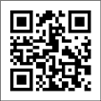資料紹介
タグ
 All rights reserved.
All rights reserved.
資料の原本内容
Social Research, Vol. 63, No. 3, 801-817 (Fall 1996)
Paul Ekman's research is supported by a Research Scientist Award from
the National Institute of Mental Health (MH06092).
Why Don't We Catch Liars?
Paul Ekman
Our research (Ekman and O'Sullivan, 1990; Frank and Ekman, forthcoming; Ekman, Frank, and O'Sullivan, forth coming) suggests that most people cannot tell from demeanor whether someone is lying or telling the truth. Such poor performance is not because lies are told flawlessly. Most liars make mistakes which could be detected but usually are missed. Both perpetrating a lie and detecting a lie, in most people, seem to be poorly developed skills. In this article, I consider six explanations for why most of us do not catch liars from demeanor. I will first explain how I distinguish lying from other forms of deceit, and then discuss the evidence which suggests that people are such poor lie catchers.
The intent of the liar is one of the two criteria I (Ekman, [1985] 1992) use to distinguish lies from other kinds of deception. The liar deliberately chooses to mislead the target. Liars may actually tell the truth, but that is not their intent. And truthful people may provide false informationbad advice from a stock brokerbut that is not their intent. The~ liar has a choice; the liar could chose not to lie. We are all tempted to lie, but we do not always do so. Lying is not irresistible; it is, by my definition, a conscious, considered choice. I do recognize that lying can become a habit and then performed with little consideration, but, at least initially, all such habits began as considered choices about whether or not to do so. Presumably, a pathological liar is compelled to lie and by my definition, therefore, is not a liar.
The second criterion for distinguishing lies from other deceptions is that the target is not notified about the liar's intention to mislead. A magician is not a liar by this criterion, but Uri Geller is a liar, since Geller claimed his tricks were not magic. An actor is not a liar, but an impostor is. Let the buyer beware is one example of an explicit warning that products or services may not be what they are presented to be. (Of course, that warning does not appear in advertisements, nearly all of which are designed to convey the opposite message.) Poker is still another situation in which the rules of the game sanction and notify the players that deception will occur, and, therefore, one cannot consider bluffing to be a lie.
Sometimes notification of an intention to mislead is implicit in the framing, to use Goffman's (1974) term, of the situation. In real estate transactions, the potential buyer is implicitly notified that the seller's asking price is not the actual price the seller would accept. Various forms of politeness are other instances in which the nature of the situation notifies the target that the truth may not be spoken. The host would not properly' scrutinize the dinner guest to determine if the guest's claim to have enjoyed the evening is true anymore than the aunt should worry whether the nephew is lying when he says that he appreciated being given a tie for Christmas. Deception is expected; even if the target might suspect that the truth is not being told, it is improper to question it. Only certain types of deception may be allowable: the poker player cannot use marked cards; the home seller cannot conceal a known defect.
In courtship, it is ambiguous whether the parties should expect truthfulness. The saying "all's fair in love and war" would seem to warn lovers not to believe all they are told. Recent public opinion polls suggest that lies that downplay the number of previous sexual partners are common among college-aged adults. Yet I expect that lovers want to believe in the truthfulness of their lover. Many popular songs testify to the betrayal felt when lies are discovered (although some do warn that lies may be expected). Romantic love requires collusive efforts to develop an...








